 Salina Yoon is an award-winning and bestselling author/illustrator of over 160 books for children, including her popular picture book series with the adventurous Penguin and the lovable Bear. Other titles include Be a Friend, and Duck, Duck, Porcupine!, the first book of a brand new early reader series. Learn more about Salina and her books at salinayoon.com. Also, enter to win a signed a copy of Duck, Duck, Porcupine! (a book that made me laugh out loud), which just pubbed last week!
Salina Yoon is an award-winning and bestselling author/illustrator of over 160 books for children, including her popular picture book series with the adventurous Penguin and the lovable Bear. Other titles include Be a Friend, and Duck, Duck, Porcupine!, the first book of a brand new early reader series. Learn more about Salina and her books at salinayoon.com. Also, enter to win a signed a copy of Duck, Duck, Porcupine! (a book that made me laugh out loud), which just pubbed last week!
Salina’s interview follows the Rafflecopter forms/entry links for the signed copy of Duck, Duck, Porcupine! and today’s Free Partial Edit Giveaway. Scroll down for her full interview.
a Rafflecopter giveaway
a Rafflecopter giveaway
For your books, you’re both author and illustrator. Do your stories start their development as words or pictures? Stories begin for me with an idea or a concept. Once I feel like there’s an idea to explore, I come up with a specific character that would best execute this idea. When the character is imagined, it helps to develop the story with more authenticity.
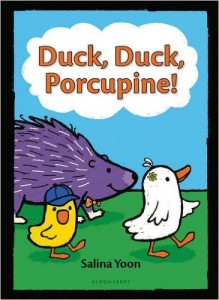 How many drafts does it typically take before you feel confident about the character and story choices you made? Usually, it’s around the third draft of storyboarding (sketches and text) where I feel like it’s either there or it isn’t. That doesn’t sound like much, but most drafts are being thought out in my mind before it’s even written. I mull ideas over and let them stay in my head until they feel worthy enough to be put on paper.
How many drafts does it typically take before you feel confident about the character and story choices you made? Usually, it’s around the third draft of storyboarding (sketches and text) where I feel like it’s either there or it isn’t. That doesn’t sound like much, but most drafts are being thought out in my mind before it’s even written. I mull ideas over and let them stay in my head until they feel worthy enough to be put on paper.
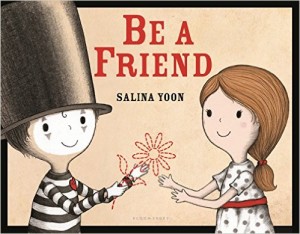 Which draft typically gets shown to your editor? How much revising happens after the editor sees that draft? This depends on which editor it is going to. The editors I work with regularly for on-going series projects will get much looser, earlier storyboard drafts. For new editors on a new project submission, I would dummy out the entire book with tighter sketches and lots of finished art samples to have a clear representation of the final book. For Be a Friend, I dummied up nearly half the 40-page picture book with finished illustrations. After it was acquired, I ended up re-doing the artwork for the entire book because I was unsatisfied with my own quality of the illustrations. So doing the final artwork in the submission stage does not necessarily mean you will have less work to do once it is acquired. After the book was sold, I did two minor revisions with my editor, though the first revision required a new ending! But the ending did not require the beginning or middle to change in this case.
Which draft typically gets shown to your editor? How much revising happens after the editor sees that draft? This depends on which editor it is going to. The editors I work with regularly for on-going series projects will get much looser, earlier storyboard drafts. For new editors on a new project submission, I would dummy out the entire book with tighter sketches and lots of finished art samples to have a clear representation of the final book. For Be a Friend, I dummied up nearly half the 40-page picture book with finished illustrations. After it was acquired, I ended up re-doing the artwork for the entire book because I was unsatisfied with my own quality of the illustrations. So doing the final artwork in the submission stage does not necessarily mean you will have less work to do once it is acquired. After the book was sold, I did two minor revisions with my editor, though the first revision required a new ending! But the ending did not require the beginning or middle to change in this case. 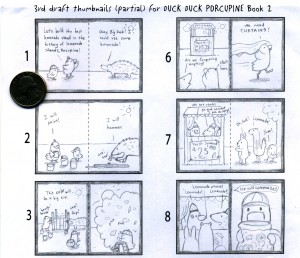 [Editor’s note: Over the years I’ve witnessed Salina’s personal encouragement of writers and illustrators, so it’s no surprise to me that she’s gone the extra step of providing sketch drafts for us. Click on this pdf to see her original third draft of the Duck, Duck, Porcupine! storyboard, the version she shared with her editor. The coin in the scan shows how small those sketches actually are—roughly 3″x2″. That’s as big as she works until going to final art. She enlarges the thumbnails digitally then sends them to her editor to comments upon.
[Editor’s note: Over the years I’ve witnessed Salina’s personal encouragement of writers and illustrators, so it’s no surprise to me that she’s gone the extra step of providing sketch drafts for us. Click on this pdf to see her original third draft of the Duck, Duck, Porcupine! storyboard, the version she shared with her editor. The coin in the scan shows how small those sketches actually are—roughly 3″x2″. That’s as big as she works until going to final art. She enlarges the thumbnails digitally then sends them to her editor to comments upon. 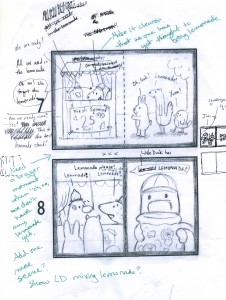 You’ll see her editor’s notes in green; the other notes surrounding the spread are Salina’s as she begins the revision process.]
You’ll see her editor’s notes in green; the other notes surrounding the spread are Salina’s as she begins the revision process.]
Do you use critique partners? I do not have critique partners, but I have a couple of trusted writer friends that I like to share my ideas with. Or sometimes, I just go straight to my agent to hear what she thinks. For sequel ideas, I go straight to my editor.
Can you share an experience of having a story problem you didn’t think you could solve but eventually did? I approach writing a story like solving a puzzle. Each piece is critical in telling the story. I cut out the pieces of my thumbnails so that each spread is loose. I arrange them in page order and see which scenes are weak, or not progressing the story. Then I simply replace the weak link with a revised piece, or simply delete it and move on. There is always lots of cutting, swapping, and taping in my crafty hands-on approach to revising.
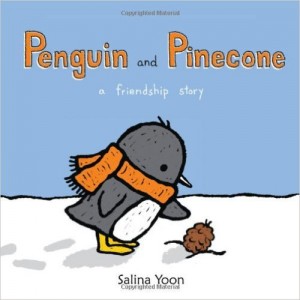 What’s the most drastic thing you’ve done to a story while revising? I’ve changed the goal of the character, which of course changed the plot, and of course changed the ending! And another time, I changed the ending… which required me to change the beginning… and revise the middle. It’s hard to change one part without impacting everything else in the story.
What’s the most drastic thing you’ve done to a story while revising? I’ve changed the goal of the character, which of course changed the plot, and of course changed the ending! And another time, I changed the ending… which required me to change the beginning… and revise the middle. It’s hard to change one part without impacting everything else in the story.
How do you know you’ve got the final draft? I have many false finals before it gets to the real final! This is a tough thing to know for certain, but it’s when it goes to press that I feel confident that this is it!
Thank you, Salina!
You can follow Salina on Facebook and Twitter @salinayoon.
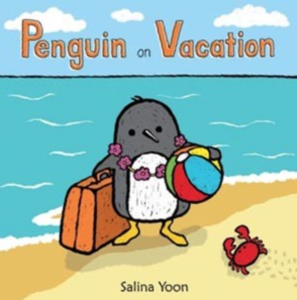

I’m pleased to announce yesterday’s winner of the Free Partial Manuscript Edit by the Editor: Laurel Decher. Congratulations, Laurel! I’ve sent you an email with details.
It’s so interesting to see the process a picture book author goes through compared to the process an author for other age groups does.
I make sure to invite amazing people across a range of categories and genres. If you haven’t already done so, click over to the Revision Week Archive using the main menu or this link: https://www.deareditor.com/revision-week-archive/ . There you’ll read interviews from ghost writers, co-writers of fiction as well as autobiographies, writers of nonfiction like craft books, and screenwriters, too.
Salina, Thanks for sharing your process and thumbnails! This looks like a very cute book. Congrats! Thanks, Deborah, for these wonderful interviews!
I’m glad you’re enjoying them, Tina. I find them fascinating.
Thanks, Tina! This book is from my new graphic novel series… but I actually write and revise my picture books exactly the same way. It seems to work for me. Thanks for reading!
Salina,
I just love your good BE A FRIEND. Thanks for participating.
Agreed! BE A FRIEND is fabulous.
Thank you, Rosanne! That was truly a story I wrote from the heart. It’s certainly not a commercial book, and will never be a bestseller, but it doesn’t have to be. It just had to be written. And thanks for reading this interview!
Tried to read on my Kindle and the slider doesn’t work. Then tried on my desktop and the slider works down to the “Can you share an experience…” question, but I can’t see the rest of the post. Please help!
Should be fixed now, Valerie. Thanks for the heads up.
Thanks for the interview. I think it is awesome when a writer can do illustrations too.
Isn’t it? To be that talented at both the text and visual sides of storytelling would be so fabulous.
Rick, it’s interesting that you perceive me as a writer who also illustrates. I think more of myself as an illustrator who also writes. 😉 Writing still intimidates me, so I have a secret to combat that fear. I illustrate. If I let my images tell most of the story, I can get away with as few words as possible. Thanks for reading!
I love these questions and hearing the process. Thank you Salina for giving us a peek at your writing and illustrating process and the thumbnails and thank you Deborah for giving us these fun learning opportunities and a giveaway!
I was thrilled that she shared the thumbnails. Very helpful to those writers who aren’t also illustrators to get a peek at that part of the process.
I love, love, LOVE Salina’s Penguin! Salina is such a professional when it comes to her work and everyone can learn a lot by studying her process…
Donna L Martin
It was love at first sight with me an Penguin. I walked into a bookstore and there he was, on a table facing me. I made a beeline for that book (Penguin and Pinecone, his first book) and my love only deepened when I opened it. Absolutely adorable.
Oh, wow, Donna! What a compliment! Thank you for your longtime support! We all learn from each other!!
And thank you, Editor (Deborah!), for sharing your love story with Penguin!!! Much love to you, too!
I’m always intrigued to read about the process from an artistic point of view–thanks for those intriguing miniature thumbnails! Looking forward to seeing the final version of Duck, Duck, Porcupine.
It really is a good one, Nancy. You’ll love it.
Loved the extra peek at your thumbnail sketches Salina! Bravo!
A really interesting way of working…I like the idea of cutting up your thumbnails to move them around.
Thanks for a great post, Dear Editor! 🙂
You’re welcome, E!
Thank you for sharing your revision process and a dummy.
I loved reading about Salina’s process. I’m trying to learn more about the illustrating side since I took over a volunteer position with our SCBWI chapter. And I can’t wait to read Duck, Duck Porcupine!
High five on your contribution to your chapter, Shelly. Love hearing that it’s expanding your knowledge base, too.
Thanks, Deborah – another great interview and such a big fan of Salina and her work (as she knows ;-)) – and yes, so generous of her to share her process including the thumbnails – fascinating.
Thanks, Wendy.
Great to learn even more about Salina’s process. She is one of the hardest working author/illustrator’s I know.
And yet among that lovely work storm, she’s always so upbeat and such a cheerleader of others. Now that’s someone to admire. She inspires me so much.
You are killing me with your kindness, and everyone here, too! THANK YOU!!! I especially need the encouragement today. I have to do a re-write on a story I actually quite loved. I thought I would be revising that one today… but no… must re-write. From scratch. Deep sigh. (But this is not uncommon! I’ve done MANY re-writes from scratch.) It’s hard. But it’s my job. So… thanks for this!
Thanks for the insight into your process. I enjoy hearing about successful writers’ habits.
Nice of Salina to share her sketches. I’m going to share this with a few picture book writer friends.
Salina, your books are favorites in my house, especially the Penguin series. My boys and I can’t wait to read your latest! Thank you for sharing your process.
This is so interesting! I loved seeing the author’s notes and the editor’s notes. It helps to know everyone needs to go through revision. Thanks for this!
The slider is not working for me past “What’s the most drastic thing you’ve done to a story while revising?” Otherwise, I’ve learned a lot from what I have read. I don’t write picture books, but I can still glean some good stuff. Thx!
I’ll work on it, Tena. I’m not seeing the problem on any of my devices but will work to find and fix. Sorry for any inconvenience.
Yippee!! The slider is now working. Thx for your hard work. I truly appreciate it. I like Salina’s answer regarding the final draft. I’m thinking there’s probably plenty of authors who feel the same way . . . it’s only done when it goes to press. Thx for this interview.
Huzzah! Thanks for the heads up in the first place. So glad you’re enjoying the interviews.
Looks like a cute book. I’ve always been impressed with author/illustrators.
I can’t read the full post either…
I am intrigued by the professional writers featured who don’t belong to critique groups. (I know some who do, by the way.) I guess it’s each to her own–but I would be wandering lonely as a cloud without mine.
I can’t recreate this problem myself but I’ll work to find and fix it spit-spot. Perhaps you can try another device in the meantime? Sorry for the hiccup. UPDATE: It’s fixed!
I love Salina’s books. Just read the first Duck, Duck, Porcupine. Love the characters. It is so wonderful to see the early draft with editor feedback. Thanks!
It’s fun to see how an author/illustrator edits–right on the sketch/draft. I edit on my “canvas” (the manuscript) and Salina edits on hers. Thanks for sharing the sketches with us!
Thanks to all the authors – this is way cool.
So interesting! Can’t wait to read Duck, Duck, Porcupine!
Thanks for sharing your approach, Salina. I like the puzzle analogy and I think even someone who is a writer only could benefit from cutting out the pieces of a layout and working with each spread loose. I will try that! I love your Penguin books and I just checked out Be a Friend from the library; I’m looking forward to reading it!
Thank you for sharing. I’m always in awe of illustrators and the amount of time it takes them to birth a project. All the best to you!
After hearing you speak at SCBWI, I was delighted to see your books at Kohl’s. I immediately bought a book and stuffed animal, and can’t wait until the grandkids visits. Your book “Penguin on Vacation” is so clever!
I love Penguin & Pinecone…. can’t wait to see how the lemonade stand problem gets solved. Thanks, Salina, for sharing your thoughts – and the storyboard sketches.
I laughed out loud when I saw how that lemonade problem gets fixed. Definitely find out!
Gahhh! I can’t believe that after sharing about this event before it even began, it took me 3 days to actually get over here to read and comment.
I love Salina’s perfectionism, her dedication t the craft, and the way she works…not to mention Salina herself! ❤️ When I grow up, if I can be even half as good as she is, I’ll be happy.
I noticed that T. Sometimes one just gets caught up in Life. Glad to see you here now. 🙂
p.s. Thank you for your generous Review Week and other goodies and giveaway!
Fabulous post by Salina Yoon! Thank you! 🙂
Penguin has a special place in our house, as these are some of the few books my very active, not-particularly-interested-in-being-read-to 4yo will bring to me again and again and again. In fact, he’s now looking over my shoulder, cheering “I know that book!” 🙂 Very much looking forward to Duck, Duck, Porcupine!
What a generous interview. It’s important for newbies to understand that professionals re-do, re-sketch, and revise-revise-revise. It’s not enough to plant the seed and think the job is completed once the first set of shiny leaves show up. Or that their first completed story with beginning/middle/ending automatically makes it viable for publication. Rewards come from the revision process itself — the journey. There’s much to learn along the way. You gave examples from your real-life experience, and that is so valuable! Thank you.
Well said, Joy! (Hey readers, if you haven’t already done so, Like Joy’s Facebook page “Got Story?” https://www.facebook.com/groups/gotstory/. Talk about a champion of children’s book creators! Joy is fabulous.)
Thank YOU, Deborah! You are a ☆ !
Thank you for sharing your drafts. So much effort goes into telling a “simple” story, but that effort makes the story clearer and therefore more powerful. Great interview. Thank you.
Awesome interview!! Love Salina and her books. Super cool to get such a detailed look into the path to genius. 😉
Thank you for the wonderful opportunity…I’ve come to appreciate the value of critique in the revision process. 😉
Always interesting to hear someone’s method of writing, editing.
What a great interview and loved seeing the thumbnails. So interesting to read about other people’s process.
Thank you for the interview. I especially enjoyed the sketches!
What a great opportunity to see the author/illustrator process. Really loved seeing the thumbnails and revisions. Thank you, Salina!
I think it’s interesting that Salina doesn’t have/use a critique group. That’s one of the most common tips I see for picture book writers–get a critique group. Is that just for newer writers?
Hi Kristi, Good question! I often advise others (especially new to writing) to find a good critique group that’s a match for them. (Not all critique groups are helpful if they’re not the right match!) As for me not having one, it’s a personality thing. I’m very much an introvert and a loner when it comes to my working style, and multiple feedback is hard for me to process. I prefer one-on-one feedback… which is often from a friend, my agent, or directly from the editor (or a combo). But it really depends, project to project. Sometimes, I’ve gone to finish without sharing with anyone… and then asking my agent to submit when it was ready. In my case, I have close relationships with many of my editors, so I simply ask them for what they think first… which is why I share thumbnails. Thumbnails are like first drafts… though I do give my editors the courtesy of giving them at least a third draft that’s been revised a few times before asking for feedback. For published writers, and even unpublished ones, I have to say to work in the way that works for you! Everyone is different, so there’s no one way of developing your craft. There are prolific bestselling authors who have been in critique groups for their entire career… and others who don’t. 🙂 What’s right for you?
Great post Salina and Deborah! It is always so helpful and informative to see drafts with editor notes. Thanks so much for sharing!
Thank you ALL for reading, and leaving me comments! If we were at a cocktail party, I’d be thanking you individually and ask about how YOU work. You would all have a tip or two for me, too. Thanks for reading, and do what works for you!
Cheers, Salina!